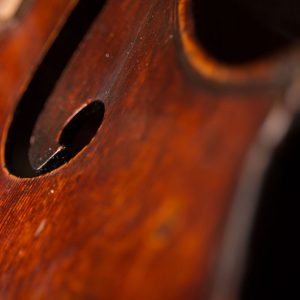
Conquering Coordination Through Broken-Rhythm Patterns
Blogmaster
Reposted from Strings Magazine.
One of the most common problems encountered by string players in virtuoso pieces is the coordination between the bow strokes and the left-hand fingers in fast running-note passages (passages consisting of mostly the same note values), especially when the majority of notes are played with separate bows or with a few small slurs thrown in. Examples of these types of passages abound—they include sections from the Finale movement of Wieniawski’s Violin Concerto in D minor, several episodes and the entire coda section of Introduction and Rondo Capriccioso by Saint-Saens, the majority of the Allegro movement from Kreisler’s Preludium and Allegro, and many, many other pieces.
Without proper coordination training, playing these passages can create a feeling of the two hands “chasing each other”—and getting tangled up in the process. In my experience, there are three main reasons for this common problem:
- Focusing primarily on the left hand instead of the bow
- Over-articulating with the left-hand fingers during separate bows
- Thinking of the passage as a blurb of notes, rather than visualizing it as a collection of small rhythmic patterns
The first issue results from an instinctive drive to think of the notes you are playing, hence focusing mostly on the left-hand finger motion, which invariably leads to the left hand being slightly ahead of the bow during separate-bow strokes. However, since the sound is produced by the bow, it is the right hand that is responsible for the correct timing of attack for every stroke. Thus, your attention needs to be focused mostly on the bow stroke, letting the left hand fit in to the rhythm—a relatively easy mental trick to master, even though it can feel a bit strange at first.
The second issue is related to the first, and can be solved with a similar mental approach—only one hand at a time should be responsible for articulation. Thus when notes are under a slur, they need to be articulated by the left hand. However, during separate bow strokes, the bow is responsible for articulation, and so the left-hand finger motion should be as light and minimalistic as possible. In fact, if you take a passage normally played with separate bows (e.g. spiccato stroke), and instead play the same notes under long slurs while still using the same left-hand finger motion as you would originally, the passage should sound very blurry and unarticulated.
The third issue can be worked on by training your mind to think ahead in short patterns (bursts) of notes. This is accomplished by practicing the relevant passages in “broken rhythms,” or inserting two rests of the same rhythmic value as the notes of the passage between each consecutive note in a beat. For example, if a passage consists of quadruplets, we would get four patterns of sextuplets (as in Ex. 1 from Preludium and Allegro, p 60). If the original passage consists of sextuplets, we would get six patterns of octuplets (see Ex. 2 from Introduction and Rondo Capriccioso).

Picture retrieved from: http://stringsmagazine.com/conquering-coordination-through-broken-rhythm-patterns/
There are a few ground rules for practicing broken rhythms that need to be followed in order to get maximum results:
- Use all original bowings and fingerings.
- If a few of the notes are supposed to be slurred, you should still play that same slur, but instead of inserting the rests and stopping the bow, you simply hold the previous note three times longer (see Ex. 3).
- During the rests, you can lift the bow slightly from the string, and then reset it for the next group.
- During the rests, visualize the next group of notes before playing them (think of the notes, their sound, and the sensation of playing them—all as a single image).
- Practice only from memory. The whole purpose of this exercise is to practice visualizing different rhythmic patterns of the same note sequences, “disengaging autopilot” completely and forcing your brain to work in a focused, deliberate manner. Doing so while looking at the printed music makes the process too easy and, in my experience, mostly pointless.
- Practice these rhythmic patterns at a relatively moderate tempo (around 60 bpm to a quarter for Ex. 1, and about 50 bpm to a quarter for Ex. 2). Since the point of this exercise is to visualize a group of notes as a single image, the tempo should not be too slow.
- Play each rhythmic pattern through the entire passage, and repeat the passage using every pattern until you can play each of them with absolute confidence, without any errors or even hesitation.
- Remember: The bow rules! Your main focus should always stay on the bow stroke. As my first Russian teacher put it: “The bow is the artist, and the left hand is the craftsman.”
Afterward, run through the passage at (or near) tempo, and in the original rhythm. If you have practiced the patterns correctly, you should now feel the whole passage settled, as if you are playing it at a slower tempo, with each note sitting firmly in its place like eggs in an egg carton.
Practicing in broken rhythms is not only helpful for learning a new passage, it is an excellent way to maintain quality when practicing an “old” piece. It can even be used as a meditation-like device to calm your nerves before a performance—practicing a couple of passages in broken rhythms backstage can give you a sense of clarity and control before walking out onstage.
Violinist Grigory Kalinovsky is Starling Professor of Music (Violin) at Indiana University Jacobs School of Music.
Subjects: Practicing, Technique
Tags: Coordination, Practice, Rhythm
